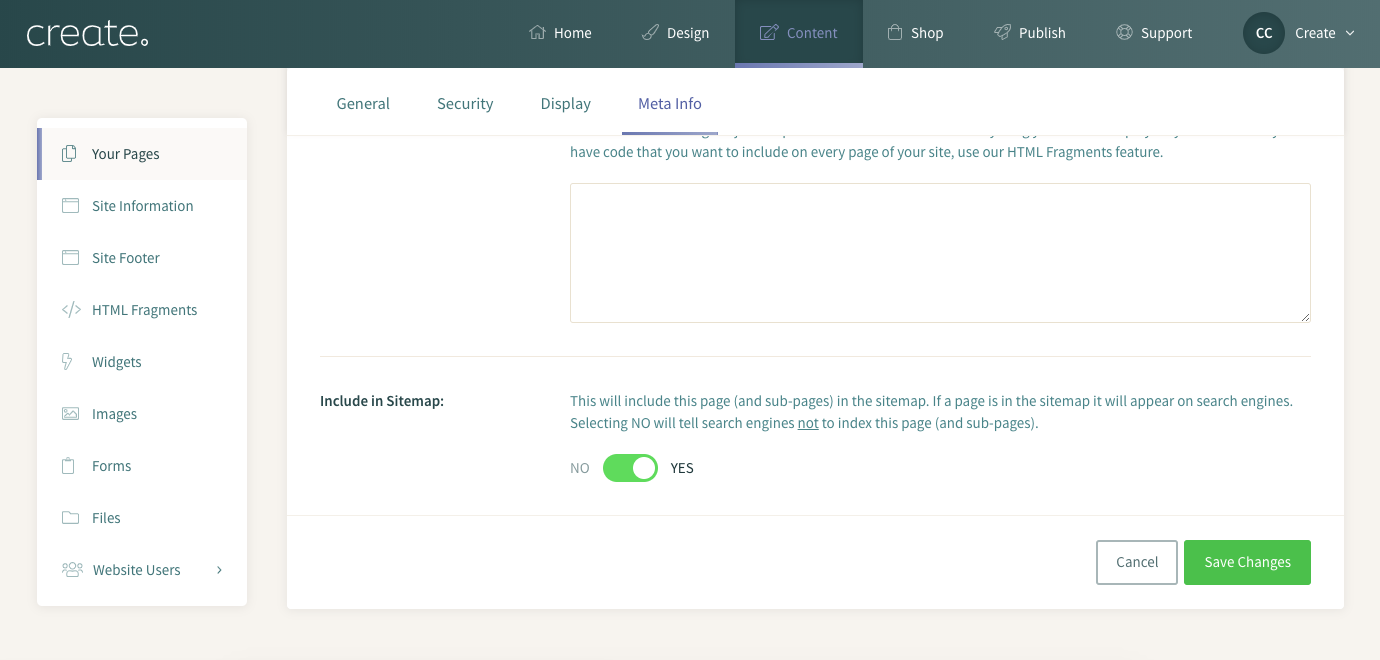Help Centre
Support > Promoting Your Website > Search Engine Optimisation
How To Generate A Sitemap
Jump To Section:
- What Is A Sitemap?
- Do I Need A Sitemap?
- Does Having A Website Guarantee My Website Will Be Indexed?
- Where Can I Find My Sitemap?
- How Do I Generate A Sitemap?
- How Can I Prevent A Page In My Sitemap From Being Crawled?
- How Does A Sitemap Help Improve SEO?
- How Do I Submit A Sitemap To Google?
- How Do I Submit A Sitemap To Bing?
- How Often Should I Submit A Sitemap?
What Is A Sitemap?
A sitemap is a document that details the information on your site and how all the pages and files link together. This can then be used as a map for search engines to find and index all of the content on your site. They can also provide context for search engines to better understand the content on your page.
Sitemaps are most commonly saved in a .xml format. This is a plain text markup that both humans and machines can read and understand.
Do I Need A Sitemap?
It is not necessary to have a sitemap for your website to function. In fact, your website can still be crawled by search engines without one. However, it is considered to be best practice and can be beneficial when trying to get all your web pages indexed. They can be especially important when:
-
You have a new website that does not have very many external links pointing towards your site.
-
You have orphaned pages (pages that you haven’t yet linked to)
-
You have a large site with hundreds of different pages to be indexed.
-
Your sitemap includes more ways to annotate the information on your website for search engines, such as rich media content, Google News content or other markups.
Does Having A Sitemap Guarantee My Website Will Be Indexed?
Submitting a sitemap does not guarantee that all of your pages will be crawled or indexed. Due to the different algorithms and processes employed by search engines, it may take longer or require alterations to your page in order for your website to be crawled.
It is highly recommended to use a sitemap to improve your chances of search engines finding your content. You will never be penalised for having one.
Where Can I Find My Sitemap?
Your sitemap can be found by typing /sitemap.xml at the end of your URL. For example:
https://www.yourwebsiteurl.co.uk/sitemap.xml
How Do I Generate A Sitemap?
If you’ve built your website using Create, we will automatically generate a new sitemap each time you publish / republish your website. This can then be submitted to each search engine to be crawled and indexed.
If you want to specify your own sitemap, you can use a plain text editor to write your sitemap (such as TextEdit on a Mac or Notepad++ on Windows), or you can use a sitemap generator such as xml-sitemaps.com. Be careful when using a sitemap generator that it is an .XML generator and not a .HTML editor as search engines can only read .XML files.
You then need to add your sitemap to your website. If you have a custom sitemap and you are using Create, simply upload your plain text document saved as sitemap.xml to your files area.
How Can I Prevent A Page In My Sitemap From Being Crawled?
You may want to prevent search engines from crawling certain pages of your website such as the checkout process and hidden pages.
You can specify what pages search engines have access to by customising your robots.txt file.
Find out how to customise robots.txt >>
You may also want to exclude specific pages from your sitemap all together. You may have them hidden from view as they're under construction or only to be directly linked to by you for certain things. You can easily exclude a page from your sitemap but please be aware that this will not stop Google from indexing the page if it finds it another way (i.e. through a link on another website or on your own).
To do this please follow the instructions below:
-
Click on Content on the top menu
-
Click on the Page Settings icon for that page
-
Click the tab titled Meta Info
-
On the option Include In Sitemap, toggle the option to No
-
Click the green button Save Changes
-
Publish your website for the change to take effect
How Does A Sitemap Help Improve SEO?
Submitting a sitemap will not lead to an improvement in your website’s ranking. However, submitting a sitemap and keeping it regularly maintained can help search engines to better understand the structure of your website and improve the efficiency of its crawl. This could potentially lead to more of your pages being crawled and indexed as a result.
In addition to this, by adding a sitemap, search engines can give you a more in-depth analysis of how your website has been indexed and what pages have crawl problems. This allows you to identify these errors and implement a fix to get those pages indexed.
How Do I Submit A Sitemap To Google?
You can submit a sitemap to Google using Google Search Console (previously Google Webmasters). You can read more on this in our help guide:
How To Use Google Search Console >>
How Do I Submit A Sitemap To Bing?
You can submit a sitemap to Bing using Bing Webmaster Tools. Doing so will also submit your sitemap to Yahoo! Search as well. You can read more on this in our help guide:
How To Use Bing Webmaster Tools >>
How Often Should I Submit A Sitemap?
We recommend submitting a sitemap every time you publish / republish your website. This will help search engines to pick up and reflect any changes to your website as soon as possible.
Related Articles
Related Articles
More Questions?
If you have any further questions, please get in touch and we will be happy to help.
Get in Touch




